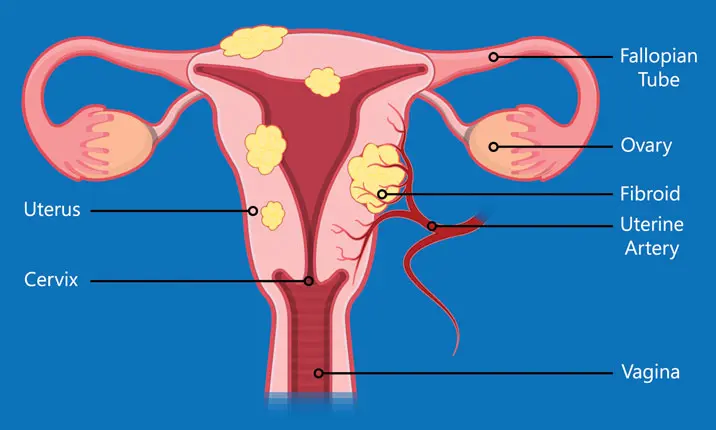What is Myomectomy?

Symptoms Requiring Myomectomy
Women with uterine fibroids may experience:
- Heavy menstrual bleeding
- Prolonged periods
- Pelvic pain or pressure
- Frequent urination
- Constipation
- Pain during intercourse
- Difficulty getting pregnant
If these symptoms affect daily life or reproductive plans, myomectomy may be recommended.
Procedure or Treatment
Myomectomy can be performed in different ways based on the size, number, and location of fibroids:
Abdominal Myomectomy (Open Surgery):
A large incision is made in the abdomen to remove fibroids.
Suitable for large or multiple fibroids.
Laparoscopic Myomectomy:
Minimally invasive, with small incisions and use of a camera-guided instrument.
Faster recovery and less pain.
Hysteroscopic Myomectomy:
No external incision; fibroids are removed through the vagina using a hysteroscope.
Suitable for fibroids located inside the uterine cavity.
During surgery, the fibroids are carefully excised while preserving healthy uterine tissue. Recovery time varies depending on the type of surgery, from a few days (hysteroscopic) to several weeks (abdominal).
Prevention
Benefits of Myomectomy
- Preserves the uterus: Ideal for women planning future pregnancies.
- Relief from symptoms: Reduces pain, heavy bleeding, and pelvic discomfort.
- Improved fertility: Increases chances of conception if fibroids were causing infertility.
- Enhanced quality of life: Enables women to resume daily activities without discomfort.
Types of Myomectomy
Abdominal Myomectomy (Laparotomy)
Traditional open surgery.
For large or deeply embedded fibroids.
Laparoscopic Myomectomy
Keyhole surgery.
Minimal pain and quick recovery.
Robotic Myomectomy
Advanced form of laparoscopic surgery using robotic arms.
Greater precision with minimal invasion.
Hysteroscopic Myomectomy
Through the vagina and cervix.
For submucosal fibroids within the uterine cavity.
